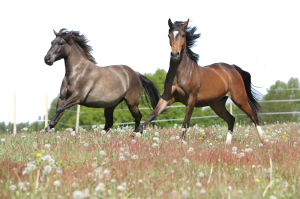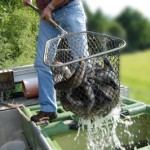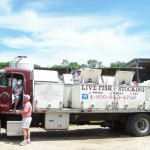Pasture quality fluctuates with every season, but the shift in quality from summer to fall is significant. During the fall, there are often warm, sunny days and cool nights. Pasture plants manufacture sugars in the presence of water, carbon dioxide, and sunshine, and then use those sugars to fuel growth during the night. However, when nighttime temperatures drop in the autumn, it becomes too chilly for plants to grow and the sugars are stored for later use. This leads to a concentration of stor ed sugars in the plants, which may increase the risk of digestive upset or laminitis in some horses. Horses at most risk are those that are significantly overweight or those that have trouble managing normal blood sugar levels and are sensitive to sugar content in the diet.
ed sugars in the plants, which may increase the risk of digestive upset or laminitis in some horses. Horses at most risk are those that are significantly overweight or those that have trouble managing normal blood sugar levels and are sensitive to sugar content in the diet.
Changing seasons also mean drastic swings in weather conditions and temperatures. This, combined with a major diet adjustment of moving from pasture to hay, can increase the chance of digestive disturbances. While not scientifically proven, many horse owners and veterinarians have experienced what appears to be an association between changes in barometric pressure and the incidence of colic episodes in horses. A dramatic drop in temperature often causes horses to drink less water, and at the same time, horse owners will often increase the amount of hay fed to help horses stay warm. More hay and less water consumption together may lead to impaction colic.
As we move into fall and winter, hay becomes the major forage source for many horses. Switching from pasture to hay or getting a new supply of hay represent as big a change to the horse as a change in grain. These significant dietary adjustments should ideally be made gradually to decrease the risk of digestive upset. Horses should be fed good-quality hay to maximize nutrition and minimize potential digestive problems. Good-quality hay, of any variety, will be clean and have a high leaf-to-stem ratio, small-diameter stems, few seed heads or blooms, fresh smell and appearance, and a bright color (faded, yellow or brown color may indicate aged hay or poor storage conditions). The maturity of the plant at harvest determines the hay quality more than any other factor. Young, leafy, immature plants contain more protein, energy, and minerals than older plants with thicker stems. Also, as a plant matures, it contains more indigestible fiber (lignin), which reduces nutrient availability. Lower-quality hay must be supplemented with higher-quality feed to maintain horses’ good condition and health.
Fall is a season of transition and an important time to evaluate the quality of forage available for your horse and whether the grain ration is appropriate and adequate to meet your horse’s nutrient requirements. When winter arrives, horses must be in good condition to be able to withstand colder temperatures. Adjusting grain rations in the early fall will prevent weight loss due to lower-quality forage and, if horses need to gain weight, there is still time for a thinner horse to gain some before the cold weather really sets in.



